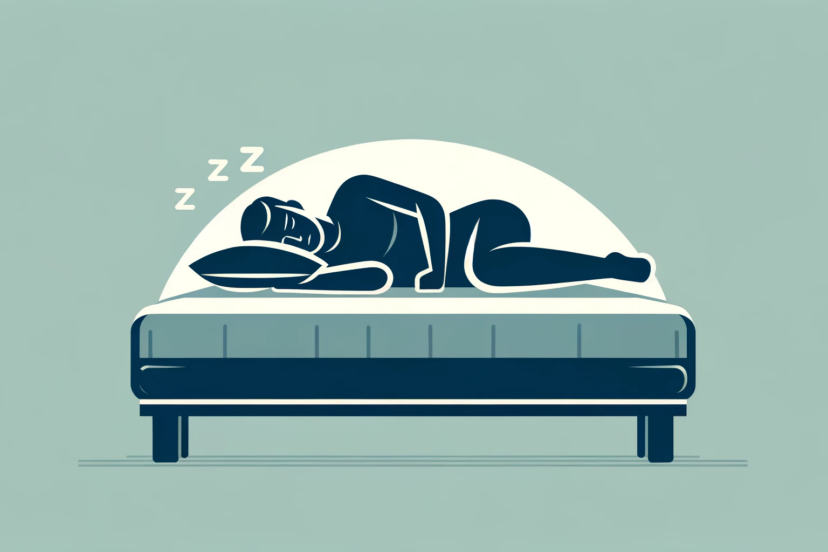Best Sleeping Position for Blood Circulation
Sleep is a fundamental component of a healthy lifestyle. It’s the time when our bodies rest, recover, and prepare for the challenges of the day ahead. However, the quality of your sleep isn’t solely determined by the hours you spend in bed; your sleeping position matters too. By choosing the right position, you can significantly improve blood circulation, which, in turn, contributes to better overall health. Read more about “Best Sleeping Position for Blood Circulation”.
Understanding Blood Circulation
Blood circulation is a fundamental physiological process that sustains life. It involves the continuous movement of blood throughout your body, delivering essential oxygen and nutrients to cells while removing waste products. To comprehend the significance of choosing the right sleeping position for optimal blood circulation, it’s essential to grasp the basics.
When you sleep, your body doesn’t go into rest mode entirely. Instead, it enters a state of repair and rejuvenation, and blood circulation plays a pivotal role in this process. Proper circulation ensures that vital substances reach every tissue and organ, facilitating repair and growth. Moreover, it aids in the removal of metabolic waste products generated by cellular activities.
During sleep, the circulatory system works tirelessly to maintain equilibrium, but your sleeping position can influence the efficiency of this process. Understanding blood circulation’s intricate dance within your body sheds light on why the right sleeping position can significantly impact your health and well-being.
The Ideal Sleeping Positions
Not all sleeping positions are created equal when it comes to blood circulation. We’ll discuss four primary positions and their impact:
- Sleeping on Your Back: Back sleeping offers numerous benefits for circulation. Discover why it’s often recommended and how to make it a comfortable choice.
- Sleeping on Your Side: Side sleeping is a popular option, but there’s a catch. Find out why it’s beneficial and how to ensure a restful night in this position.
- Sleeping in the Fetal Position: For some, the fetal position is the go-to choice. We’ll explore its pros and cons and provide guidance for those who prefer this posture.
- Sleeping on Your Stomach: While stomach sleeping isn’t the top choice, we’ll examine its effects on circulation and offer recommendations for those who naturally gravitate towards it.
- Fluffy Body Pillows for Adults
- Large Long Bed Pillows for Sleeping
- EXQUISITE & SOFT SUPPORT
Tips for Achieving the Best Sleeping Position
- Mattress Quality: Invest in a comfortable and supportive mattress that suits your preferred sleeping position. A good mattress provides the right balance of comfort and support for your spine.
- Pillow Selection: Choose the appropriate pillow based on your sleeping position. Back sleepers may benefit from thinner pillows, while side sleepers may require thicker ones to maintain proper neck alignment.
- Posture Alignment: Focus on maintaining proper posture alignment while sleeping. Ensure that your spine, neck, and head are in a neutral position to reduce strain on your body.
- Pillow Between Knees: If you sleep on your side, consider placing a pillow between your knees to align your hips and reduce pressure on your lower back.
- Elevate Legs: Elevating your legs slightly while sleeping on your back can help improve blood circulation in the lower body. Place a pillow or cushion under your knees for added comfort.
- Sleep Environment: Create a sleep-conducive environment by keeping your bedroom cool, dark, and quiet. A comfortable room temperature promotes better sleep.
- Limit Screen Time: Avoid using electronic devices before bedtime as the blue light emitted can disrupt your sleep-wake cycle. Instead, engage in relaxing activities to wind down.
- Consistent Sleep Schedule: Establish a regular sleep schedule by going to bed and waking up at the same times each day, even on weekends. This helps regulate your body’s internal clock.
- Stay Hydrated: Maintain proper hydration throughout the day but avoid excessive fluid intake close to bedtime to minimize nighttime awakenings.
- Avoid Heavy Meals: Refrain from consuming heavy or spicy meals before bedtime, as they can cause discomfort and indigestion, making it difficult to sleep comfortably.
- Manage Stress: Practice stress-reduction techniques such as meditation, deep breathing, or progressive muscle relaxation to ease your mind and promote relaxation before sleep.
- Physical Activity: Incorporate regular physical activity into your routine, but avoid strenuous exercise close to bedtime. Gentle stretches or yoga can be beneficial.
- Consult a Professional: If you have specific sleep concerns or persistent discomfort, consult a healthcare professional or a sleep specialist for personalized guidance.
You might be interested in: Best Sleeping Position for Breathing Problems
Factors to Consider
Your sleep position isn’t solely about personal preference. Health conditions, sleep disorders, and other factors can influence your choice. We’ll discuss how these elements come into play and provide guidance for adjusting your position accordingly.
- Health Conditions: Evaluate any existing health conditions you may have, such as sleep apnea, acid reflux, or chronic pain. Some conditions may influence the most suitable sleeping position for better comfort and symptom management.
- Pregnancy: If you are pregnant, your sleep position can affect both your comfort and the baby’s well-being. Consult your healthcare provider for guidance on the ideal sleeping position during pregnancy.
- Age: Age can play a role in the most comfortable sleeping position. Children, adults, and seniors may have varying needs and preferences when it comes to sleep postures.
- Personal Comfort: Ultimately, the best sleeping position is the one that provides you with the most comfort and restful sleep. Personal preferences can significantly impact your choice, so pay attention to what feels right for you.
- Partner’s Sleep Position: Consider your sleeping partner’s position as well. Finding a compromise that works for both of you can lead to a more harmonious and restful night’s sleep.
- Mobility and Flexibility: Your level of mobility and flexibility may affect your ability to switch between sleeping positions. Ensure that your chosen position is accessible and comfortable for your body.
- Experimentation: Don’t hesitate to experiment with different sleeping positions to find the one that suits you best. Over time, your preferences and needs may change, so stay open to adjustments.
- Consult a Professional: If you have specific concerns or medical conditions that affect your sleep, it’s advisable to consult a healthcare professional or a sleep specialist. They can offer tailored advice based on your unique situation.
- Pillow and Mattress Support: The type of pillow and mattress you use can influence your sleep position. Ensure that your bedding provides the necessary support for your chosen posture.
- Sleep Disorders: If you suspect you have a sleep disorder, such as insomnia or sleep apnea, seek a professional diagnosis and treatment. These conditions can impact your ability to find a comfortable sleep position.
- Sleep Hygiene: Maintain good sleep hygiene practices, such as limiting caffeine and alcohol intake, and avoiding stimulating activities before bedtime. These habits can promote better sleep regardless of your chosen position.
- Soft Long Bed Pillow for Adults
- Ergonomic Comfort
- Multi-Function
- Removable Cover
Best Sleeping Position for Blood Circulation
In conclusion, selecting the best sleeping position for optimal blood circulation is not a mere matter of comfort; it’s a vital component of overall health. Your understanding of how blood circulation supports your body’s functions during sleep and wakefulness can guide you in making informed choices about your sleep posture.
By choosing a sleeping position that aligns with your body’s natural mechanisms, you can enhance the efficiency of blood circulation, promote better oxygenation of tissues, and support the body’s vital processes. The journey to improved sleep and health starts with the conscious choice of a sleep position that caters to your well-being. Sweet dreams await those who embrace the science of sleep and circulation.






